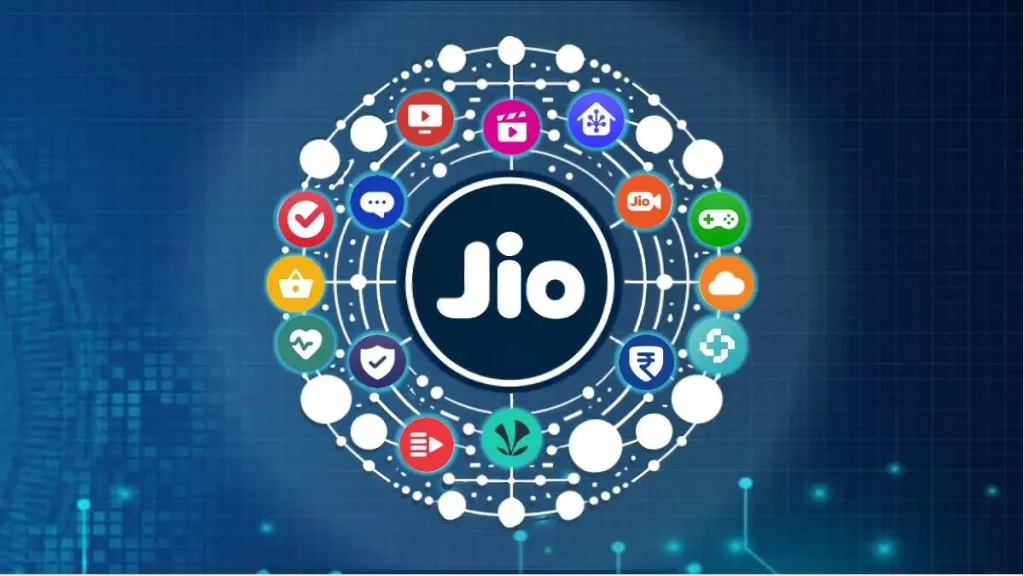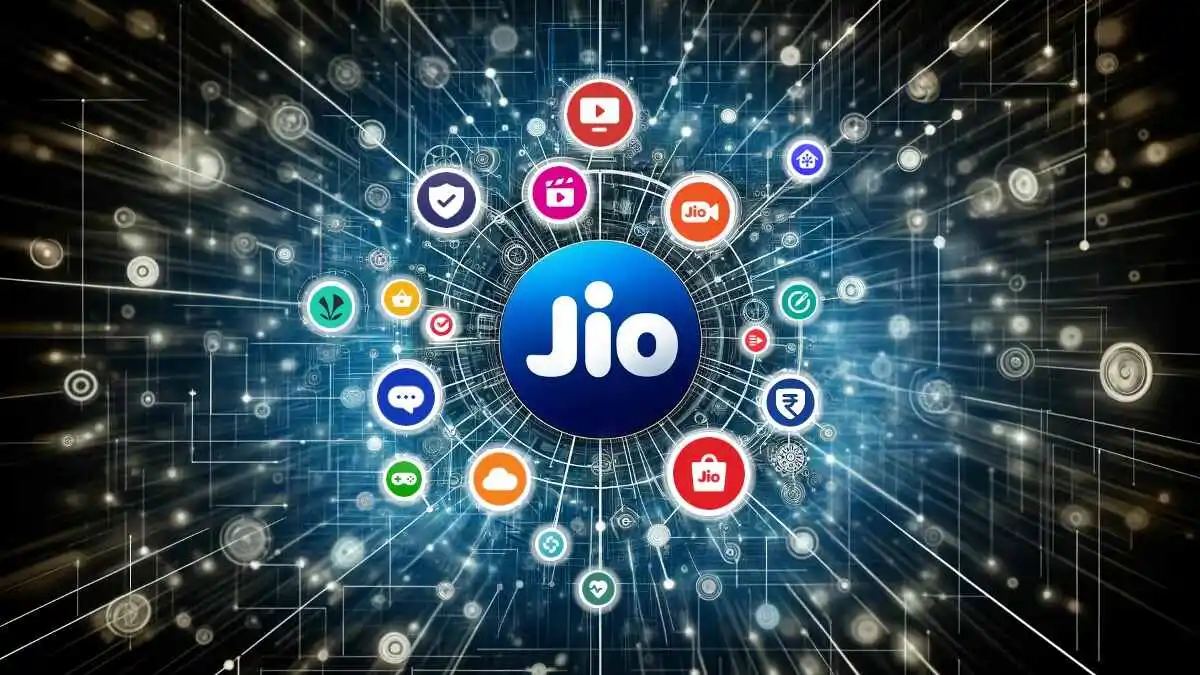Jio’s 3-Point Strategy to Connect a Billion Indians (Part II)


The transformation of India’s telecom landscape from a hyper-competitive market to an oligopolistic structure has largely been attributed to the disruptive entry of Reliance Jio in 2016. In the first part of this two-part series, we analysed two strategies that helped Jio to leapfrog its way to the top of the Indian telecom industry, becoming the uncontested market leader within a decade of its existence. The company’s strategic deployment of extensive 4G infrastructure, supported by a colossal $18 billion investment, enabled it to offer unprecedented high-speed internet access across both urban and underserved rural areas. By December 2023, Jio had achieved a dominant market share of 39.69%, a testament to its successful penetration strategy.
Reliance Jio, India’s leading telecom operator, has now clinched the title of the world’s largest mobile operator in data traffic consumption. It has also secured the second-largest 5G subscriber base globally, boasting 108 million users.
Jio’s initial freemium model for six months’ subscription was critical to attracting nearly 100 million users and drastically lowering the cost of mobile data, thereby setting new standards for pricing within the industry. This aggressive pricing, combined with high-quality services, compelled other operators to exit the market or merge, leading to significant market consolidation around Jio and Airtel, effectively making it a two-horse race.
Now, let’s look at what actually gives Jio the edge over competitor telcos: a seamless digital ecosystem aka “the Jio digital infrastructure”. This comprehensive digital platform strategy encompasses various sectors, including entertainment, financial services and connectivity, culminating in an unprecedented integration of services that has both diversified Jio’s revenue streams and solidified its customer base.
Sometime in the last decade, the Telecom industry started changing drastically. As mobile data became pervasive, consumers started spending more and more time on their portable handheld devices and depended on them for everything ranging from infotainment to news and social media. The increasing data consumption put tremendous pressure on the telecom operators to invest in the infrastructure deployment while the “willingness to pay” for such services was not very high (especially since most of the apps were free!)
For a while, we had an interesting situation where the telecom operators kept investing money so their consumers could access free services such as Google, Meta, etc. who, in turn, made billions of dollars in ad revenues. In many ways, this move was a double whammy for the telecom operators. On the one hand, their importance in the whole system was reduced to being a ‘connectivity pipe’ while on the other hand, a large part of benefits from a digital world these telcos had helped create was going to a third party altogether. This prompted the Indian operators to start reevaluating their business models. They realised that they needed to corner a piece of the pie on the “Digital World” side.
Jio had a distinct advantage here because it was a not an entrenched player, i.e. an incumbent in the telecom parlance, that was locked into a technology, infrastructure and leadership mindset—this made it really difficult to participate in a meaningful way in the digital economy.
The “Killer App” Philosophy
Reliance Jio deployed something we term as the “Killer App” philosophy. Soon after establishing itself as a fan favourite among urban and rural netizens, Jio launched a suite of digital apps on a consolidated platform which has been pivotal to its expansive growth and market dominance in the Indian telecom sector. The integration of these apps not only diversified Jio’s revenue streams but also significantly enhanced user engagement and retention.
- Jio’s Array of Apps and Their Market Impact: One of Jio’s most strategic moves was the launch of JioCinema, which effectively disrupted traditional subscription-based video-on-demand (SVOD) models. By offering high-demand content like the Indian Premier League (IPL) for free, JioCinema disrupted longstanding streaming platforms which had relied on premium content to drive subscriber growth. This move not only diverted significant viewership from competitors like Disney+ Hotstar, which previously held the digital streaming rights for the IPL, but also significantly altered consumer expectations for content accessibility and pricing in the streaming industry.
The provision of free, high-quality, popular content on JioCinema served multiple purposes: it drastically increased the app’s user base, enhanced viewer engagement and positioned JioCinema as a major player in the digital streaming space. Even the ad-free/paid version of JioCinema (₹1 per day or ₹30 per month) is much cheaper than the competition such as Amazon Prime/Netflix. Much like how Jio pushed competing telcos to reassess their tariffs, JioCinema too, likely, spearheaded the re-evaluation of content monetisation strategies across the industry, pushing competitors to consider more flexible or diversified revenue models to retain viewership.
Furthermore, the billion-dollar merger between JioMusic and popular music platform Saavn, engendering the JioSaavn app, not only facilitated the former’s foray into the online music streaming market and expand Jio’s content library but also integrated Saavn’s strong original programming—for example, Saavn’s Artist Originals (AO) initiative which provides an invaluable platform to next-gen independent artists for producing and promoting music—into Jio’s offerings, pushing the platform towards rivalling the likes of Spotify and Apple Music to become a leading global name in music streaming.
Both JioCinema and JioSaavn demonstrate Jio’s overarching approach to creating a comprehensive digital entertainment ecosystem. By removing cost barriers to high-value content, integrating diverse entertainment services and partnering with popular apps, Jio has effectively maximised user engagement and retention. This strategy has only served to enhance Jio’s value proposition and user stickiness, both of which are critical in the telecom sector where switching costs are low and consumer loyalty is volatile.
- Strategic Use of Content and Services: Jio’s ecosystem strategy leverages its extensive network capabilities to offer a suite of services that are optimized for its own network, ensuring seamless connectivity and enhanced user experiences. The optimization of these apps for Jio’s network means that they perform better, providing faster load times and higher quality streaming, which are not available to non-Jio users. This not only enriches the user experience but also makes these services more attractive, encouraging users to stay within the Jio ecosystem.
Jio has ventured beyond the ‘entertainment’ and ‘content’ space by integrating services such as JioMart and soon-to-be-launched Jio Pay. By integrating various service needs into one platform, Jio increases user stickiness—consumers are more likely to subscribe to additional services or continue using existing ones if they perceive added value. This strategy is not just about keeping the users engaged; it’s about making it inconvenient to leave.
This integrated approach also impacts Jio’s average revenue per user (ARPU) positively. When customers use multiple services from Jio, they generate more data traffic and are likely to opt for higher data plans or additional services. Each part of Jio’s ecosystem feeds into another, creating a cycle of increased data consumption and revenue. For instance, a user attracted by the free IPL streaming on JioCinema might decide to try out JioSaavn for music, increasing their data usage and potentially upgrading their data plan. In urban areas, Jio is creating an even tighter interlock between its various telecom and content services by offering Jio set-top-box along with Jio Fiber connectivity that bundles almost all the popular OTT services under one subscription. Today, when a Jio Fiber customer pays for a broadband connection, they are automatically subscribing to a whole bunch of popular OTT platforms such as Netflix, Amazon Prime and others.
One of the things about Reliance is that it saw waves early on and acquired companies to fill those gaps. When these acquisitions happen, they seem small, but they can snowball.
– Inc42
Reliance Jio’s journey from a new entrant to a dominant force in the Indian telecom industry highlight several lessons. The telecom juggernaut probably read the rural/semi-urban India better than any other telecom player that existed for a long time before them. The kind of digital revolution launched by Jio must be experienced to believe it. It has truly brought rural India into the mainstream by bringing them online.
Jio’s rise to top of the telecom pyramid has become a prominent case study for large telcos around the world. Its colossal upfront investment, which seemed like an overkill at the time, to cover rural and semi-urban areas with high-speed mobile voice & data network; aggressively priced launch and creating a robust service-driven ecosystem around its services are extremely interesting approaches. Jio had the advantage of not being firmly entrenched in old-ways but that does not give it an automatic success guarantee.
What do you think Jio will do next? (Hint – We believe it will focus on B2B services and tech innovations such as AI/IoT/Industry 4.0). Let us know your thoughts in the comments below.






Responses